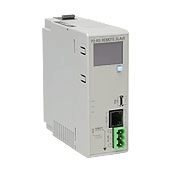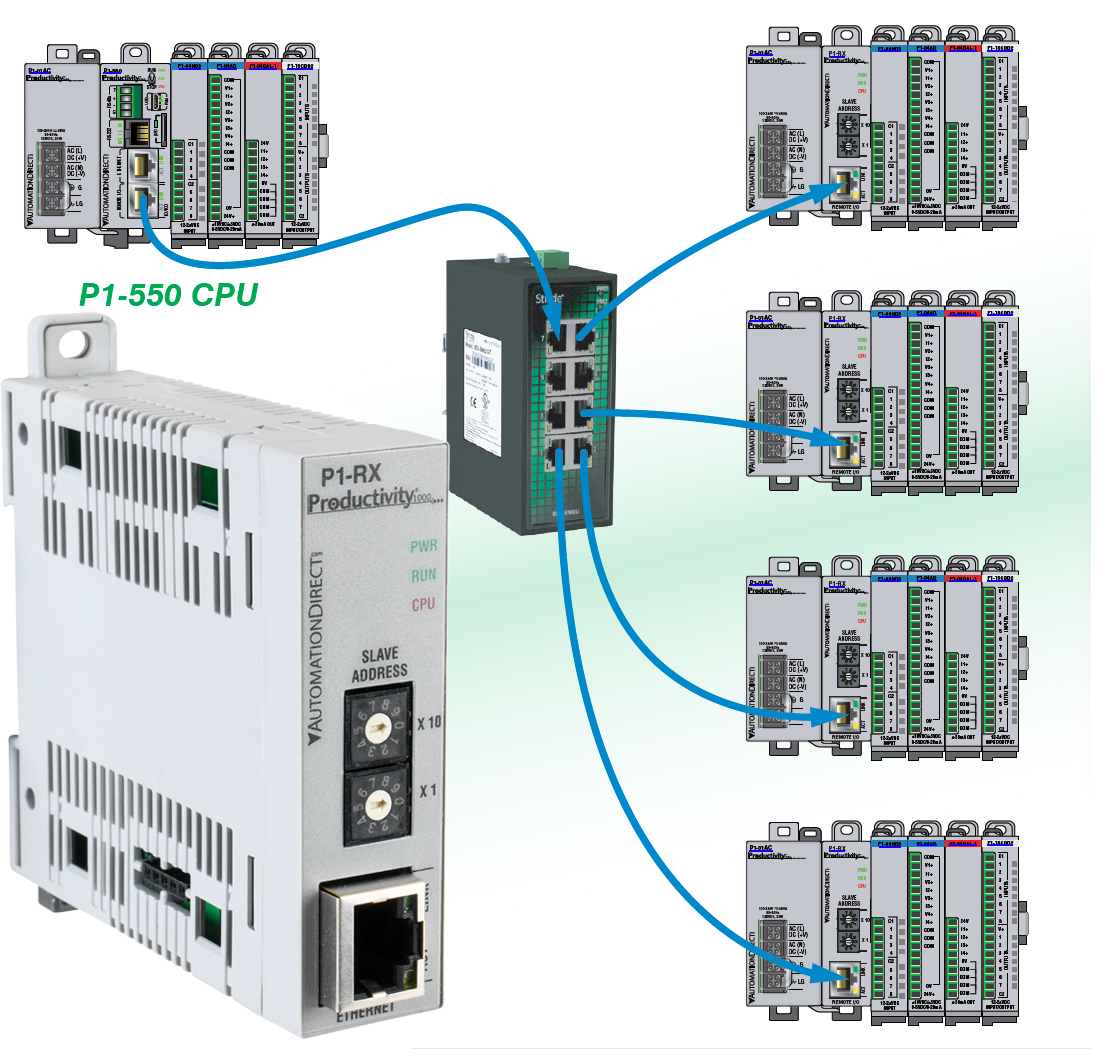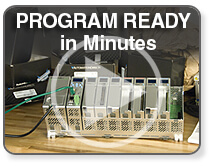 Cookies are not enabled on your browser.
Cookies are not enabled on your browser.Cookies are required for our site. Please enable cookies in your browser preferences to continue.
- Barcode / RFID / Vision
- Bulk Wire & Cable
- Cables (Terminated)
- Circuit Protection / Fuses / Disconnects
- Communications
- Drives & Soft Starters
- Enclosure Thermal Management & Lights
- Enclosures & Racks
- Field I/O
- HMI (Human Machine Interface)
- Hydraulic Components
- Motion Control
- Motor Controls
- Motors
- Pneumatic Components
- Power Products (Electrical)
- Power Transmission (Mechanical)
- Process Control & Measurement
- Programmable Controllers
- Pushbuttons / Switches / Indicators
- Relays / Timers
- Safety
- Sensors / Encoders
- Stacklights
- Structural Frames / Rails
- Tools & Test Equipment
- Valves
- Water (Potable) Components
- Wire & Cable Management
- Wire & Cable Termination
- Retired Products
Configuration Utilities
- PLC Family Selector
- P1000 PLC Systems
- P2000 PLC Systems
- P3000 PLC Systems
- ProductivityCODESYS
- CLICK PLC Systems
- Do-more® BRX PLC Systems
- LS-Electric® XGB PLC Systems
- Productivity®Open Systems
- Datalogic® Safety Light Curtains
- LS-Electric® Servo Systems
- Nitra® Pneumatic Grippers
- Object Detection (Sensors)
- PAL Controller Configurator
- Precision Gearbox Selector
- Protos X® Field I/O
- Pyrometers Selector
- Quadritalia® Modular Enclosures
- Stellar® Soft Starters
- Stepper System Selector
- SureFrame T-slot Extrusion
- SureMotion® XYZ Gantry
- SureServo2® System Selector
- SureStep® Linear Actuators
- Timing Belts & Pulleys
- Werma® Stacklights
- ZIPLinks

Communications
2. 5 Built-in communication ports
Imagine the agony of shelling out $5,000.00 or more for an Allen Bradley CompactLogix CPU and having to pay extra to communicate with your existing serial devices. With Productivity2000 you get 5 communications ports with several different protocols standard on the P2-622 CPU.
- RS-232, RS-485, Ethernet, Remote I/O or 2nd Ethernet, and USB (programming) ports built in!
- Modbus RTU, Modbus TCP/IP, EtherNet/IP, MQTTS - included!
- Need more serial connections? No problem, an optional 4-port serial communications module is available if the need arises.

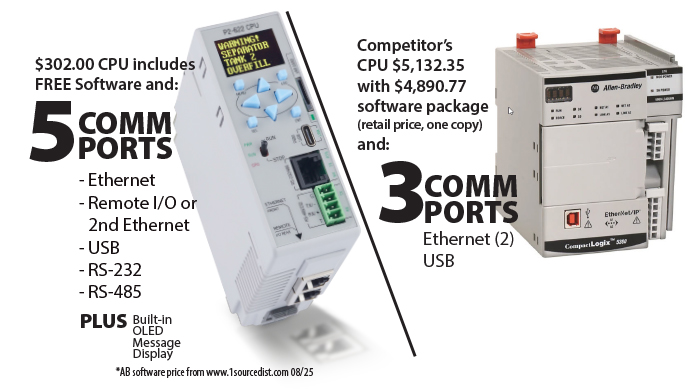
We make cloud communication easy
Industrial machines/systems are more connected than ever before, whether internally with upstream IT management systems or externally with remote support personnel, modern-day plant-floor machines/systems need to communicate to a variety of networks. Cloud networking, with its computing and data storage platforms, has also become a viable solution for analyzing and accessing production data from anywhere at anytime. Using powerful cloud platforms such as Microsoft Azure® or IBM Watson® to analyze production-floor data can provide better process efficiency, improved plant-wide resource management and less operational downtime.
But how does data from a simple level switch on a tank get to the cloud? With Productivity PLCs, it easy! Productivity PLCs have the communication capabilities and processing power needed to not only control plant-floor machines but gather valuable data from them, package it, and send it on to higher level analysis systems.
Mulitple data gathering options
Productivity PLCs offer many I/O options to choose from for your system data collection. I/O modules, available in analog, discrete, high-speed, relay, and temperature versions, allow you to create the custom I/O configurations your application needs. And with Modbus RTU, Modbus TCP and EtherNet/IP protocol support, Productivity2000 PLCs can easily gather raw data from a variety of VFDs, sensors, switches, encoders, pilot devices, or almost any other control component your system may have.
MQTT
The MQTT protocol has become the frontrunner for many machine-to-machine (M2M) and IIoT/cloud networking applications, due to its lightweight overhead and reduced bandwidth consumption. Productivity PLCs support MQTT communication and with fill-in-the-blank MQTT messaging configurations, delivering vital data to advanced cloud computing platforms is easy.
Compatible with MQTT brokers and cloud platforms/services including:
- IBM Watson®
- Mosquitto®
- HiveMQ®
- Thingsboard®
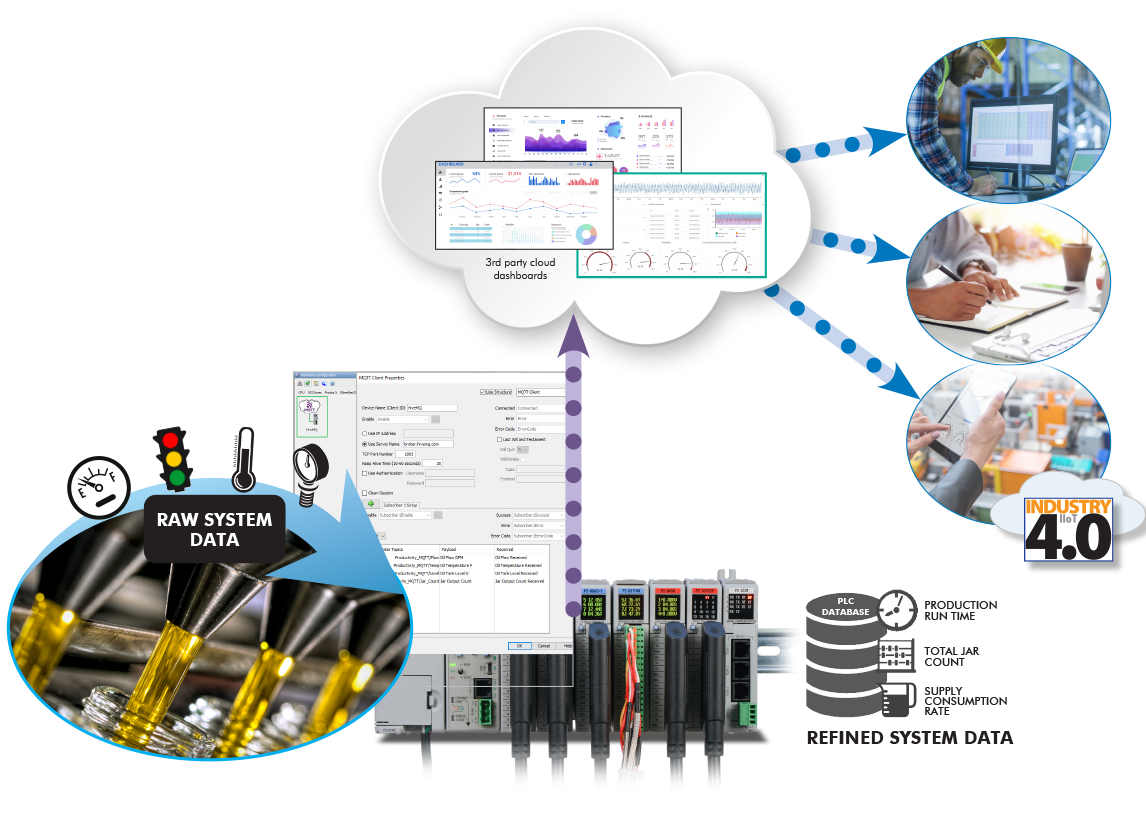
Perfect match for C-More HMIs!
Export your tagname database from the Productivity CPU and import it into your C-more HMI Panel to jumpstart your HMI development. No more digging through your notes, or hunting through your ladder logic to find the right tagname.
Connect up to 16 C-more HMIs to the Productivity CPU via Ethernet for control and visibility of your process/machine from anywhere in your factory. Use the remote access feature of C-more to view (and possibly control) your system from anywhere via the Internet. C-more offers a wealth of productive features that make it a perfect match for the Productivity2000. More about C-more here.

Support for EtherNet/IP Devices
The P2-550 CPU supports EtherNet/IP - both explicit and implicit (I/O messaging).
This diagram explains the two basic types of EtherNet/IP traffic:
- Explicit Messages are great for "one-off" requests and/or requests that are not time-critical, but there is unavoidable overhead for both the TCP/IP message and the specification of the data being requested.
- I/O Messaging is very fast and efficient. There is minimal message overhead and all data specifications are handled ahead of time (NOT repeated in every message). It can provide deterministic, periodic updates for time-sensitive data.
The Productivity2000 (P2-550 CPU) supports BOTH types of messages; can function as Client, Server, Scanner or Adapter; AND the Productivity Suite software makes set-up and configuration a snap.
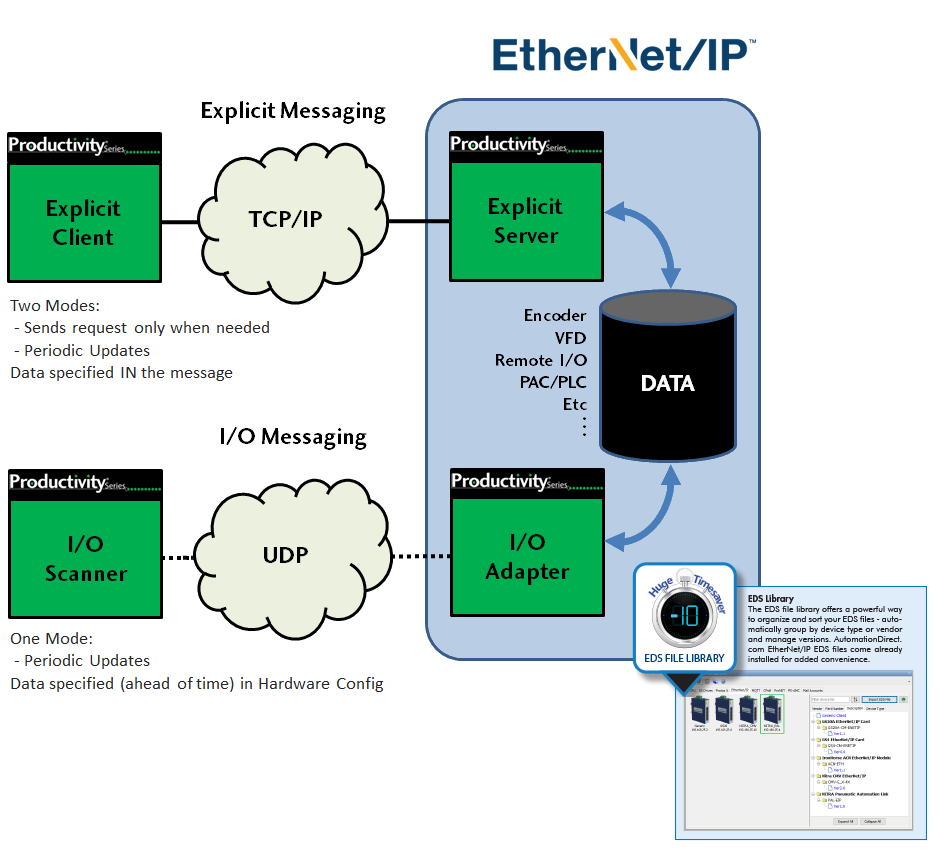
Remote and Field I/O Made Simple
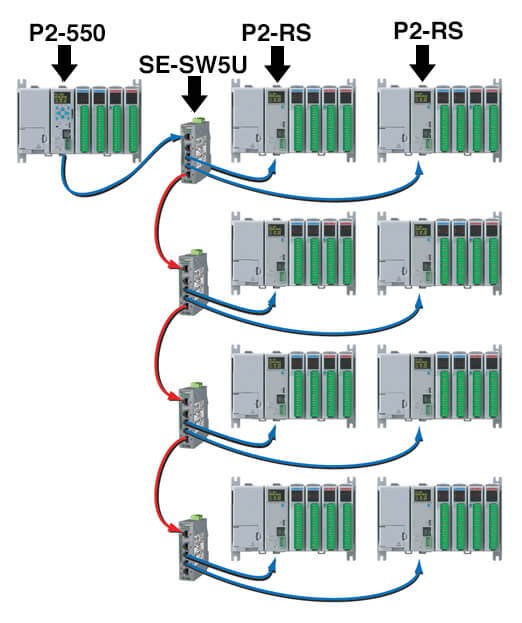
Add up to 8 remote racks
Create a Remote I/O rack by simply installing a P1-RX or P2-RS Remote Slave module in the controller slot of an additional rack. Connect the remote racks to the master with standard Ethernet patch cords and switches. The Productivity2000 master will auto-detect all the I/O, and will create the physical I/O tags automatically. You are free to use the auto-configured settings or adjust them manually.
Access over 4000 I/O points in a single Productivity2000 system
Install remote I/O racks wherever you need them! In the main enclosure when you have a large local I/O count, OR distribute remote racks to be closer to the actual I/O devices to minimize wiring length, complexity, AND COST. Mount remote racks at the other end of a machine, the other side of the plant floor, or in another building - and wire a single Ethernet cable back to the Master!
Integrated field I/O
The Productivity Suite software will auto detect the Protos X field I/O system (using a Modbus coupler) connected to the Remote I/O port of the P2-550 and automatically assign tags to the installed I/O terminals. The configuration can be manually changed and it is saved within the PLC project.
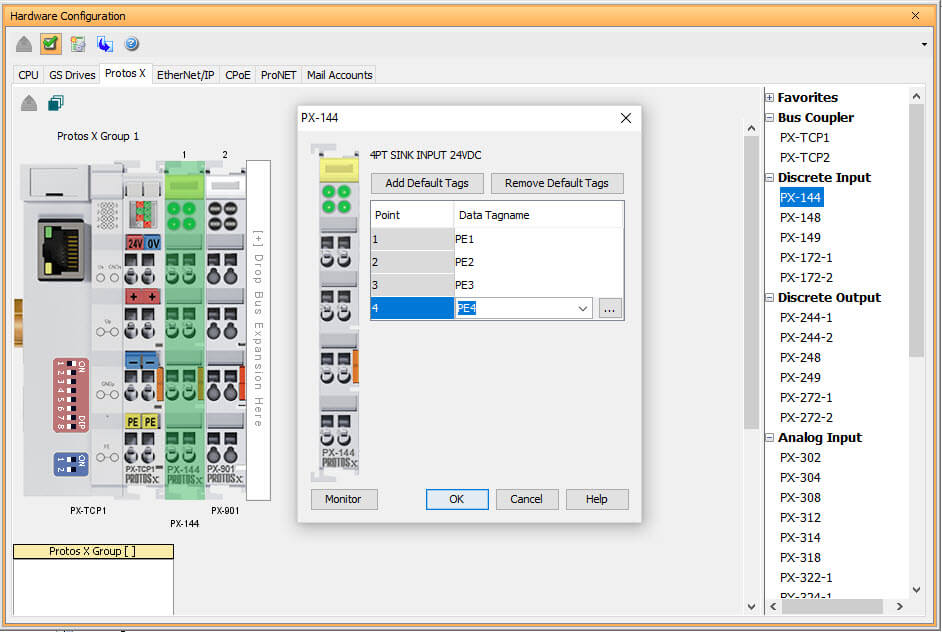
7. VFDs can be set up in seconds
The Productivity2000 programming software is designed to recognize any AutomationDirect GS series drive. Simply connect the drive to the remote I/O port via its Ethernet connection and it is discovered in the Productivity Suite software. And no more searching through drive manuals to find the parameter you need. Each parameter, with description, range, and value, is available in the software. These parameters can be read from, edited, or written to the drive right from the Productivity Suite Hardware Configuration, making initial setup almost too easy! Store all of your drive parameters in the CPU for safekeeping and communicate to your drives with simple read/write instructions in the software. This can save you hours of time.
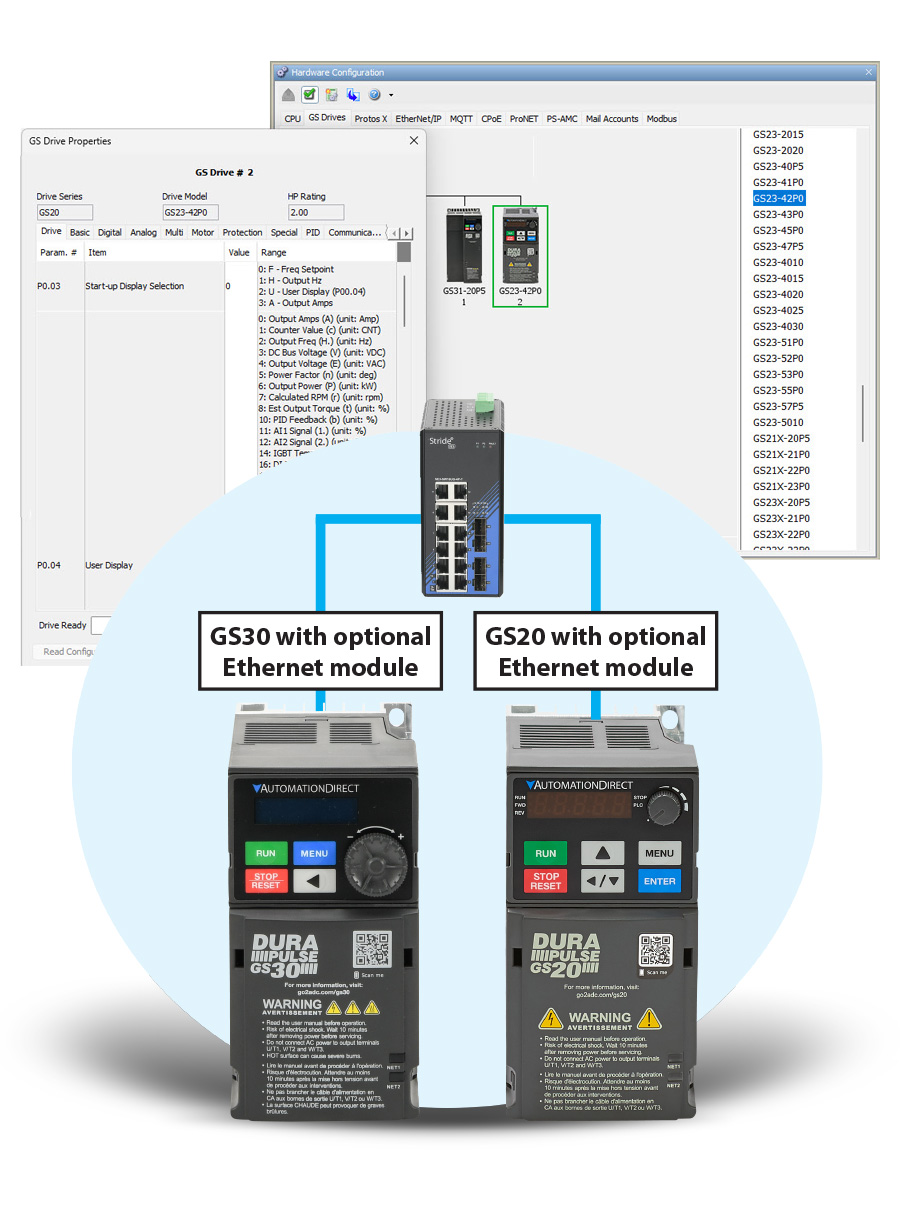
Plug-and-Play Programming
Have you ever felt unproductive while configuring stop bits, parity, or baud rates in order to connect to a programmable controller? The Productivity2000 uses USB programming for true plug-and-play functionality. Plug in your USB cable and move on to the productive activities like configuration and programming.
You can program across Ethernet as well, but we wanted Productivity2000 to have a fast reliable way to get started. When combined with auto-discovery of I/O modules, the USB plug-and-play capability helps you be productive right away.
Take a look at our video "Program-ready in minutes".
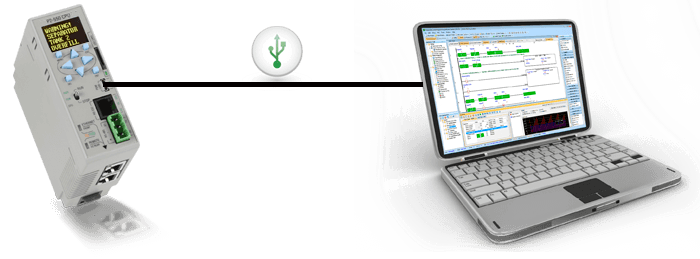
Ethernet Programming
The Productivity Suite programming software supports both USB programming and Ethernet Programming. The PLC Connections dialog box (shown below) allows you to connect to any PLC on your network for programming or data monitoring operations. The PLC Connections dialog even dispays PLCs that are on other subnets, and will allow you to change the IP address and name of those PLCs so that you can connect to and program those as well. The "Blink CPU Display" buttons are a great way to make sure you are connected to the intended PLC, before risking a program transfer.
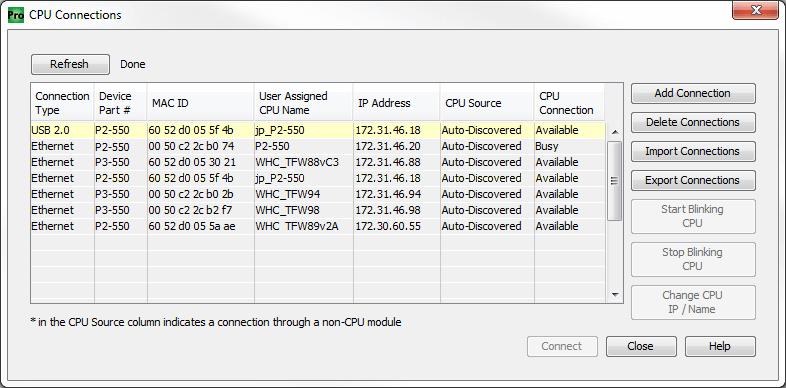

Check out our job openings
Free Online PLC Training
FREE Video Tutorials
FREE e-Newsletter
Automation Notebook
Product Literature
White Papers
News, Product and Training Bulletins
E-Books
 Safe &
Secure
Safe &
Secure

We accept VISA, MasterCard, Discover, American Express, PayPal or company purchase orders.
Voted #1 mid-sized employer in Atlanta
Check out our
job openings

